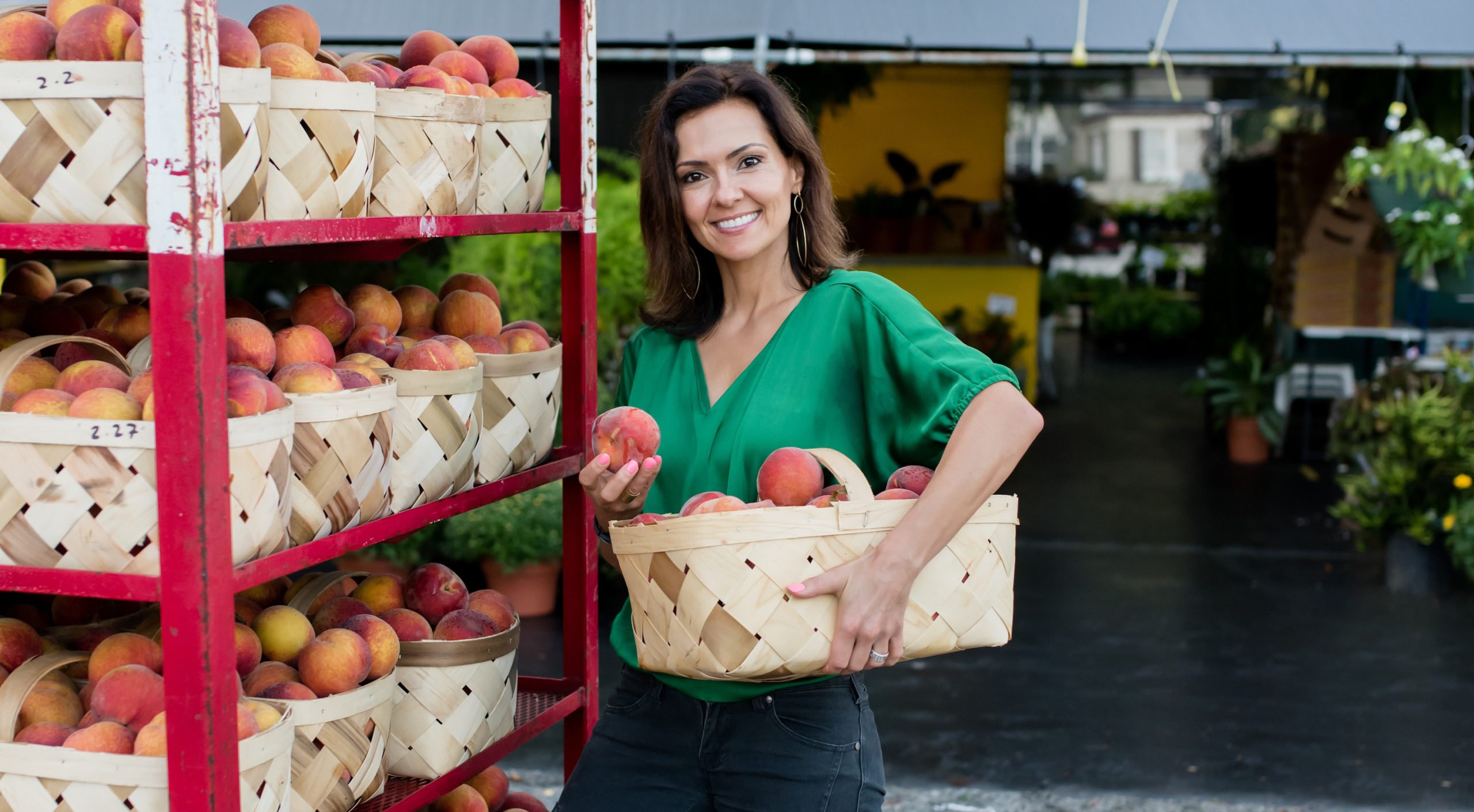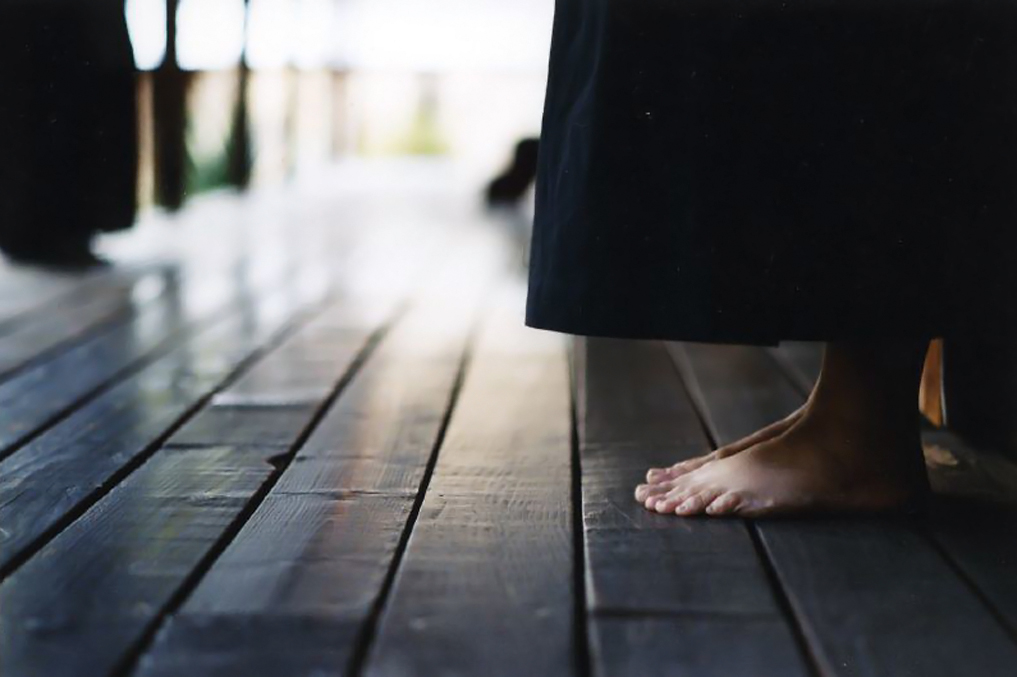Yoga For Grounding: The Best Asanas To Bring You Back To Your Center
The post Yoga For Grounding: The Best Asanas To Bring You Back To Your Center appeared first on The Yoga Nomads.

In our high-stress modern world, it’s not uncommon to get stuck in our heads from time to time, replaying the same negative thought patterns and feeling our anxiety levels increase. When our emotional and mental state becomes unstable, we experience an imbalance in our well-being and lives.
One of the best ways to get out of our busy minds is to practice yoga and pranayama. Yoga poses and breathing techniques help us return to our bodies, focus on the present moment, and reconnect with our inner selves.
But how exactly does yoga make us feel more grounded? And what asanas are best for increasing feelings of stability and clarity? Let’s find out.
How Does Yoga Help You Feel More Grounded?
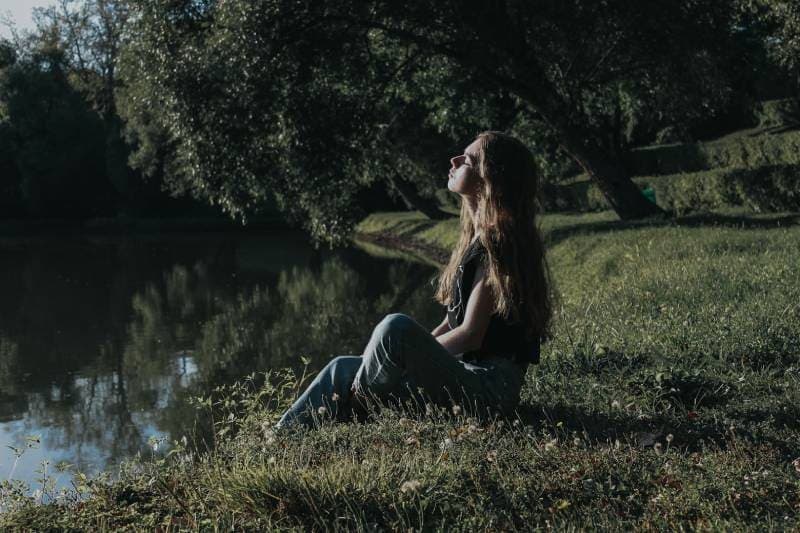
Grounding refers to being present in your body and connected to the physical world. Although the spiritual practice of yoga can increase our connection to the metaphysical realm, it always helps us connect deeper with ourselves, helping us feel centered, conscious, and at ease.
One way that yoga helps ground us is because of our awareness and focus on the breath as we practice. The breath is an anchor to the present moment; thus, the more conscious breaths we take, the more we can get out of our heads.
Another way yoga can help when we feel off-center is because of the physical and energetic connection to the earth. For example, when you are holding a yoga pose, part of your body is connected to the ground beneath you, and as the practice increases bodily awareness, you notice this more than usual.
At the same time, certain yoga poses activate the root chakra, which is responsible for your sense of safety, security, and stability. Thus, when this energy center is stimulated, you notice you feel more grounded and centered.
Grounding Yoga Poses
While general yoga practice can help you feel more centered, some particular postures will bring you an instant feeling of grounding.
Most standing poses are excellent for cultivating this quality. They require the action of rooting the feet down into the ground, connecting you with the earth element, and creating a solid foundation. The stability of the lower body is also essential for finding correct posture in the upper body and maintaining balance.
Aside from standing postures, asanas that bring other body parts close to the earth are also very grounding. To maximize the benefits, focus on the sensation of these body parts while cultivating deep and steady breathing.
Here are eight of the best grounding asanas. We recommend practicing them together in a yoga sequence.
Downward Dog
Downward Dog involves the connection of both hands and feet to the earth. In this foundational asana, you press the palms down, spreading weight equally between all three points. Many yoga instructors also cue to spread the fingers wide and press them firmly, so there are no gaps underneath. In addition, the pose aims to bring the heels towards the ground, so the entire soles are in contact with the earth.
To practice Downward Facing Dog:
Start in a tabletop position. Place your hands directly under your shoulders, palms facing down.Press your palms and fingers firmly into the mat to engage your arms and protect your wrists.Tuck your toes under and lift your hips up and back. Straighten your arms as you lift your hips and press your chest to your thighs. Ideally, you want to straighten your legs to create a triangle shape, but if your hamstrings or calves are tight, keep a slight bend in your knees.Bring your heels as close to the ground as possible and relax your head, gazing at your feet.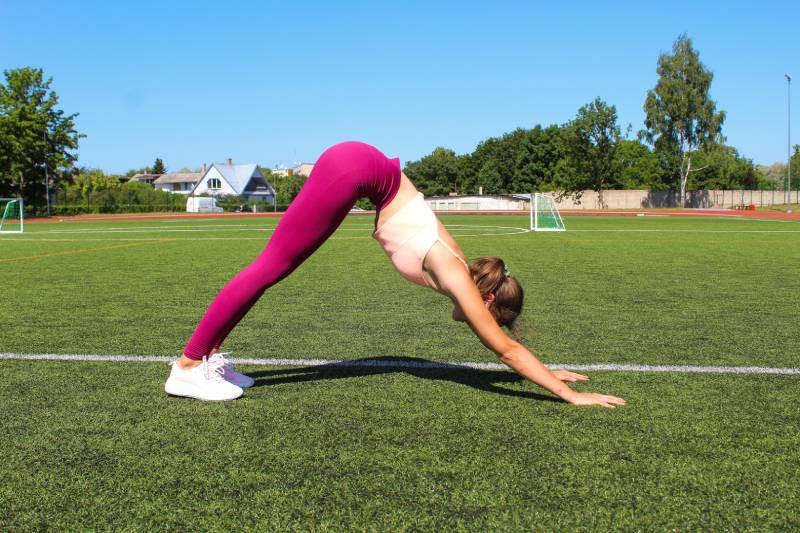
Mountain Pose
Mountain pose (Tadasana) in Sanskrit) is typically the first standing posture performed in a yoga class. While it may look like an easy pose, it has a fundamental purpose, to help you find the correct posture needed in many other asanas.
You also focus on the connection between your feet and the earth. This helps to still your mind and bring you into the present moment, preparing you for the practice ahead.
To practice the Mountain pose:
Stand with your feet touching and actively press down all four corners of both feet, distributing the weight equally. Energetically lift your knee caps to engage your thighs and suck in your belly button to engage your core.Slightly lift your chest to elongate the spine while relaxing your shoulder blades away from your ears, palms forward. Finally, pull the crown of your head up towards to sky, standing tall as you stay for five to ten breaths.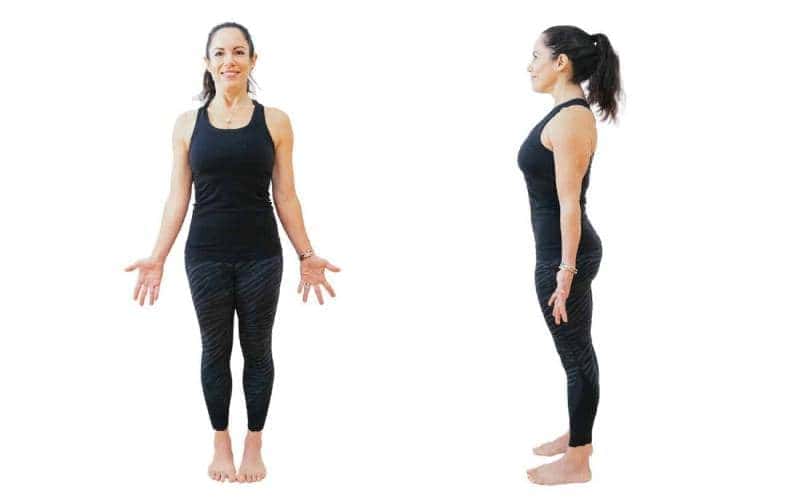
Triangle Pose
Like all standing poses, the Triangle pose focuses on creating a stable foundation in the legs. However, Trikonasana also involves lowering the upper body to the ground, deepening the connection to the earth element. Moreover, keeping the legs strong and engaged is crucial for maintaining your balance and alignment in the upper body.
To perform the Triangle pose:
Begin standing and step your right foot back. Open your hips and chest to the side with about two hip distances between your front and back foot. Keep your front toes facing forwards as you turn your rear toes to about 45 degrees.Reach your arms straight out at shoulder height. As you inhale, reach forwards with your left arm like someone is pulling that hand. Exhale and tilt your right hip to lower your left side body to your thigh. Bring your left hand to your shin, the floor, or a block. Pull your right shoulder back to open the chest more and look up to your top arm.Ensure equal weight between both feet, keeping the legs engaged and thighs hugging towards each other. Hold for five breaths.
Tree Pose
Tree pose is a popular standing balance that connects you to the earth element. It is incredibly strengthening for the standing leg and super calming for the mind. As it requires total focus to maintain balance while in the posture, it is a great asana to do when your mind feels scattered and unsettled.
To practice Tree pose:
Start in a standing position at the top of your mat. Shift your weight into your left leg as your right leg becomes light. Lift the heel as you open the hip and turn the right knee to the side.You can stay here with the right heel against the left ankle. Or, slide your right foot up your standing leg, placing it above or below the left knee. Press your left foot firmly into the ground, shifting the weight slightly to the foot’s inner side. Keep the leg extended and the thigh engaged.Once you have your balance, bring your hands into a prayer position at the heart center or reach your arms overhead. Hold here for five breaths, fixing your gaze (Drishti) on one spot directly in front of you.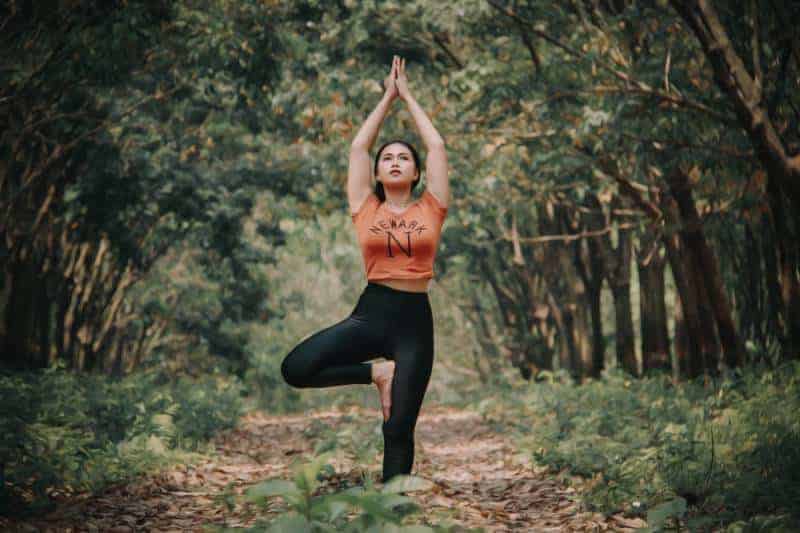
Eagle Pose
Eagle pose is another grounding yoga balance that requires a ton of focus. Thus, it can significantly reduce anxious and repetitive thoughts and install a sense of calmness and stability. Along with balancing on one leg, the Eagle pose involves binding the arms and the legs and lowering the hips towards the ground.
To practice the Eagle pose:
From a standing position, shift your weight into your left leg and press the foot firmly into the ground.Lift the right heel, bend both knees and start to lower your hips.Wrap your right leg across the front of your left thigh and bring the toes behind the left calf.Sink the hips lower while keeping your legs bound, spine straight, and pressing your left foot firmly into the ground.Next, reach both arms in front of you, palms facing each other. Bring the right arm under the left, bend the elbows and cross the arms, bringing the fingertips to the left wrist or palm.Draw the elbows up and hands away from your chest to stretch between the shoulder blades. Stay here, focusing on your breath and keeping your gaze forward for five deep breaths.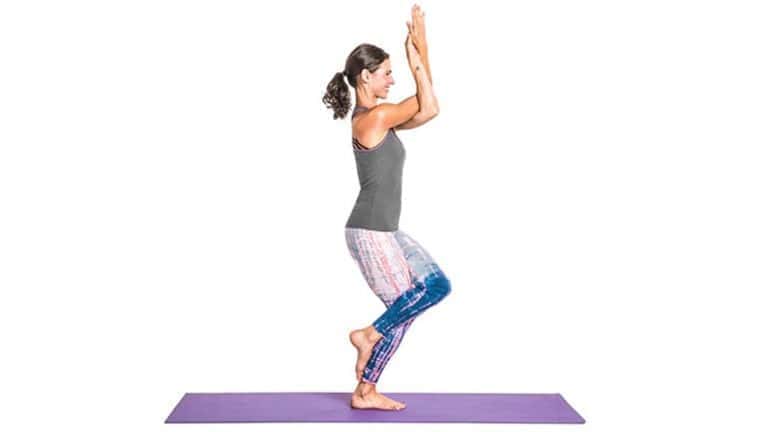
Garland Pose
Garland pose, also known as Malasana, brings you close to the earth physically and energetically. This deep hip opener involves drawing the tailbone, the location of the root chakra, towards the ground while the soles of the feet are firmly planted.
To practice Garland Pose:
Bring your feet to the outer edges of your mat, about hip distance apart, with the toes turned out and heels slightly in. Bring your hands to the prayer position at the heart center, bend the knees, and lower your sit bones towards the ground. Keep the heels rooted and sink as low as you can.Once here, visualize your energy moving downwards, anchoring you into the earth. Ensure you keep a neutral spine by energetically pressing the sitting bones down and pulling up through the crown of your head. For a deeper hip stretch, gently press your elbows into your inner knees.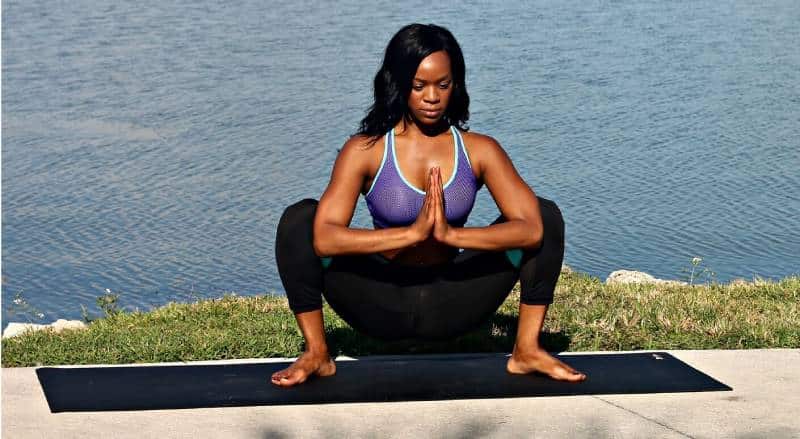
Child’s Pose
Child’s pose is a deeply nourishing posture that can be highly beneficial when you feel ungrounded, anxious, or unsettled.
To practice Child’s Pose:
Find a kneeling position where you are sitting on your heels with the big toes touching. Fold your torso over your thighs and relax your forehead on the ground or a folded blanket.For a passive variation, relax your arms by your sides. Or, to make it a more active stretch, reach your hand forwards with your arms fully extended. Relax here for as long as you need.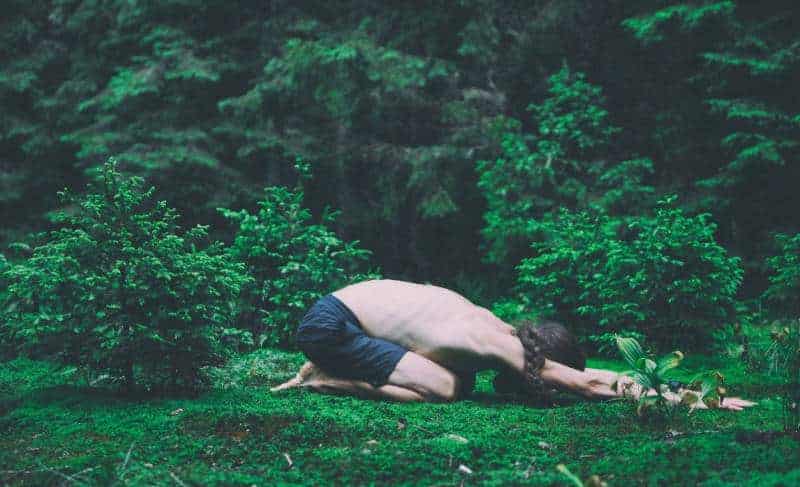
Corpse Pose
Final Resting Pose, AKA Corpse pose, has many benefits and is greatly enjoyed at the end of every yoga practice. In this nourishing yoga pose, the entire back of the body melts into the ground, connecting you to the physical world while bringing calmness to mind.
Lay on your back with your legs extended and arms by the sides. Allow the entire body to relax. Let your inner thighs and knees fall open, and the big toes turn outwards.
Bring your attention to the back of your head, then slowly let your awareness move down the back of your body, pausing to feel the connection of each body part on the ground.
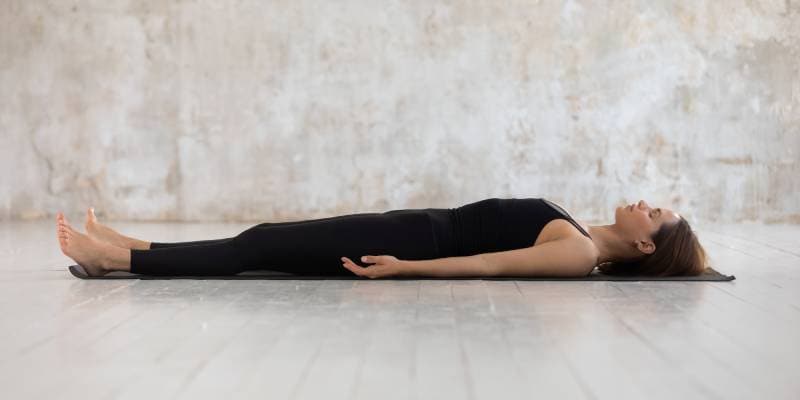
Grounding Pranayamas
As well as asanas, several yogic breathing techniques can help you reconnect to your body and the world around you.
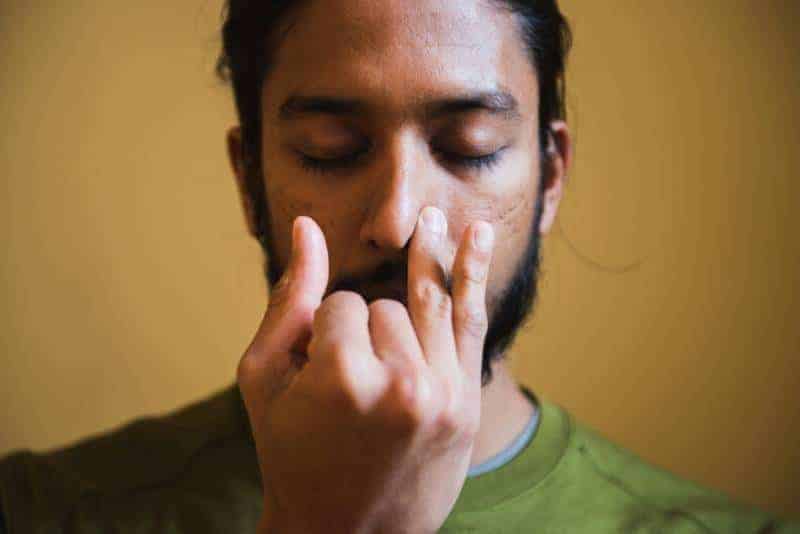
Alternate Nostril Breathing (Nadi Shodhana)
Alternate nostril breathing is incredibly calming for the mind and body as it triggers the nervous system’s relaxation response, which diminishes feelings of stress and anxiety. The technique involves breathing in through one nostril and breathing out through the other, as explained here.
Three-Part Breath (Dirga Pranayama)
The three-part breath is another calming pranayama that increases oxygen flow to the brain, resulting in clearer thinking and reduced mental activity. The three stages include breathing into the belly, the ribs, and the upper chest, as demonstrated here. To make it extra grounding, you can do it lying down.
Box Breathing
Box breathing is a mindfulness technique for relieving stress and dealing with anxiety. You breathe in for a count of four, hold at the top of the inhale for four, exhale for four, and then hold your lungs empty for four. Multiple rounds of this equal-length breathing with retention rebalance the nervous system and settle the mind.
Final Thoughts On Yoga For Grounding
Feeling grounded is a core need that helps us feel mentally and emotionally stable. When we get stuck in our minds, we don’t just lose connection with ourselves but also with the world around us. So the next time stress and anxiety overwhelm you, practice grounding yoga poses for instant calm and presence.

 JaneWalter
JaneWalter 








